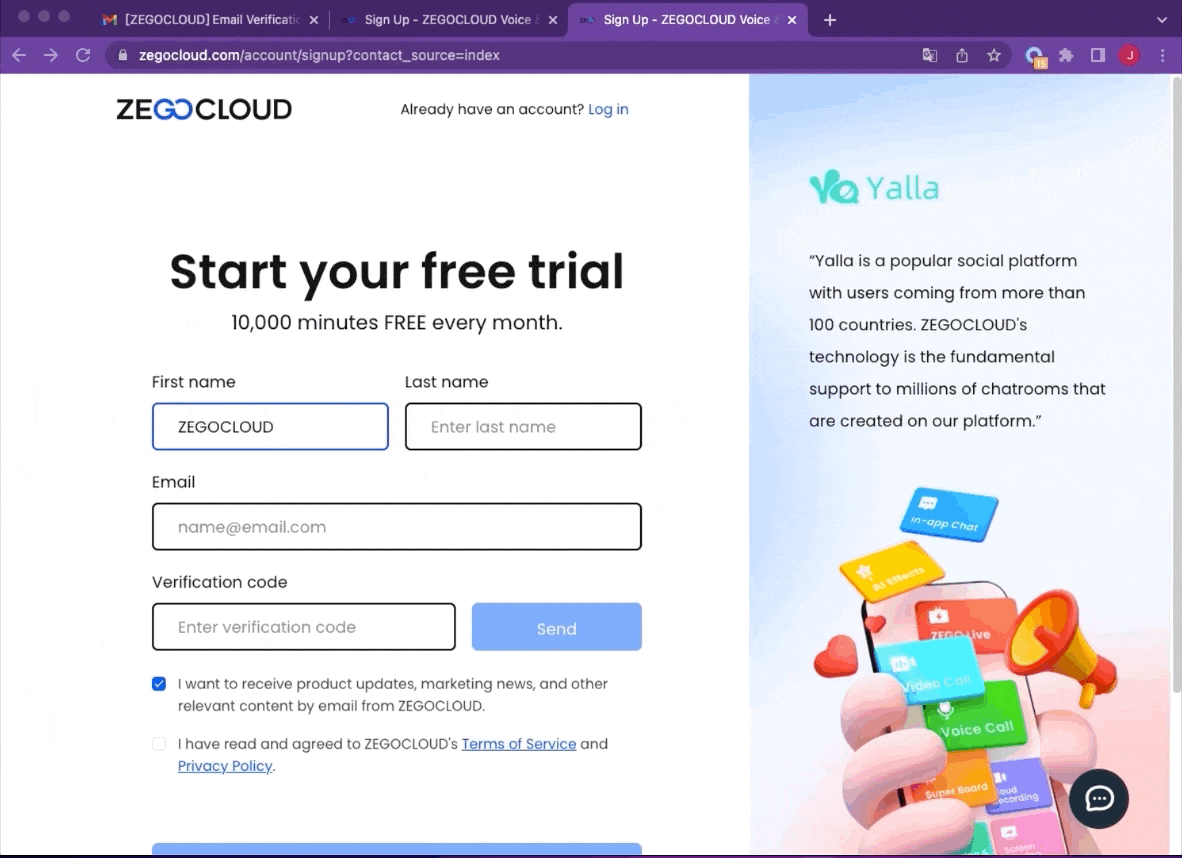Embed Video Call on Website with Prebuilt SDK
This article will introduce how to embed Video Call into your website using the Prebuilt SDK with two lines of code.
Video call function: how to implement it?
Information transmission has evolved from text to pictures and now to video.
Video calls are becoming more and more a necessary feature for applications.
From IM, dating, and meetings to live streaming and education, applications in all walks of life will integrate the video call function.
For this function to be implemented, If you don't use the prebuilt SDK, there are some complex tasks to accomplish. For instance:
Interactive interface development - Although the video call has only one page, there are various interactive buttons; each button has multiple states, that can be switched in different ways, rendering the interactive interface quite hard to handle.
Audio and video management - Audio and video management require a lot of testing and verification to ensure the stability of calls, such as different platforms, devices, system versions, and network environments which all need to be targeted. It's a time-consuming effort.
User permissions, call status, and other business-related - includes camera and microphone switch permissions, call permissions, call duration, hang up, waiting, and call status. These states seem simple, but since each of them has multiple modification paths, the logic underpinning a correct state is complex. For example, if the call is 'hung up', there can be 'active hang-up', 'passive hang-up', network 'error hang-up', 'insufficient quota', etc.
Not every team can invest a lot of workforce in solving this heavy R&D work, yet Video Call is an essential product function. The solution is to use the Prebuilt SDK to implement the Video Call function quickly.
What is the Prebuilt SDK?
Video Call Prebuilt SDK sorts out the personalized interface and interaction in Video Calls by:
- abstracting the standard functions and logic in Video Call
- encapsulating these standardized functions and logic in the Prebuilt SDK.
- integrating personalized interfaces and interactions into configuration items. Users only need two lines of code to implement the Video Call function; personalized interface and interaction can be achieved through item configuration.
ZEGOCLOUD Prebuilt web SDK
ZEGOCLOUD Prebuilt SDK is a set of standard solutions sorted out from the integration process of thousands of customers in Video Call customers.
Based on ensuring the high encapsulation of the Video Call function, this solution provides a concise configuration file, which is convenient for users to build and configure flexibly quickly.
Using the ZEGOCLOUD Prebuilt SDK enables:
- An out-of-the-box video chat interface
- Built-in bandwidth management
- Cross-browser compatibility
- Text chat
- Participant list
- Network quality monitoring
- Recording
- Call Invitation
- Customizable branding LOGO
Step-by-step guide: embed ZEGOCLOUD Prebuilt
Register an account
Create an account in ZEGOCLOUD Official.

Create a project in ZEGOCLOUD Admin Console.

Two lines of code complete the access
ZEGOCLOUD's prebuilt SDK only needs two lines of code to complete SDK access.
- Call the
initinterface to complete the SDK initialization. - Call the
joinRoominterface to join the audio and video call.
<html>
<style>
#root {
width: 100vw;
height: 100vh;
}
</style>
<body>
</body>
<script crossorigin src="https://zegocloud.github.io/zegocloud_prebuilt_webrtc/ZegoPrebuilt/index.umd.js"></script>
<script>
const TOKEN = ''; // need to generate TOKEN first
const prebuilt = ZegoPrebuilt.init(TOKEN);
prebuilt.joinRoom({
container: document.querySelector("#root"),
});
</script>
</html>
Custom prebuilt UI
ZEGOCLOUD's prebuilt SDK provides a concise configuration file, which is convenient for you to build and configure flexibly quickly.
prebuilt.joinRoom({
container: document.querySelector("#root"), // Mount the container, which fills the entire screen by default
joinScreen: {
visible: true; // Whether to display the device detection page, default display
title:"Join Room"; // Device detection page title, default Join Room
inviteURL:"https://zegocloud.github.io/zegocloud_prebuilt_webrtc/build/index.html?RoomID=test"; // Invite link, not displayed by default
};
micEnabled: true; // Whether to enable your own microphone, it is enabled by default
cameraEnabled: true; // Whether to open your own camera, open by default
userCanToggleSelfCamera: true; // Whether you can control your own microphone, enabled by default
userCanToggleSelfMic: true; // Whether you can control the body's own camera, enabled by default
deviceSettings: true; // Whether to display audio settings, default display
chatEnabled: true; // Whether to enable chat, enabled by default
userListEnabled: true; //Whether to display the member list, the default display
notification: { // message notification in the lower left corner of the video
userOnlineOfflineTips: true; //Whether to display member in and out, default display
unreadMessageTips: true; // Whether to display unread messages, default display
};
leaveRoomCallback: () => void; // leave the room callback
branding: {
logoURL: "https://www.zegocloud.com/_nuxt/img/zegocloud_logo_white.ddbab9f.png", // Brand logo in the upper left corner, not displayed by default
};
leftScreen: true; // leave the room page, default is
});
Run the demo
Try a live demo: See a live demo

Learn more about ZEGOCLOUD's Prebuilt SDK.
Sign up with ZEGOCLOUD, and get 10,000 minutes free every month.
Did you know? 👏
**Like**, **Follow**, **share** is the biggest encouragement to me
**Follow me** to learn more technical knowledge
Thank you for reading :)
Learn more
This is one of the live technical articles. Welcome to other articles:
